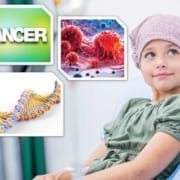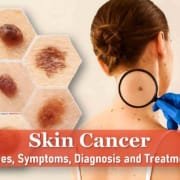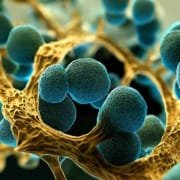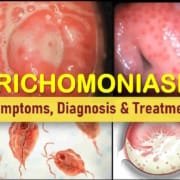Human Papillomavirus (HPV) Infection: Symptoms and Prevention
Human papillomavirus, commonly known as HPV, is a widespread virus that affects millions of people worldwide. In this comprehensive blog post, we’ll explore what HPV is, how it spreads, its potential health impacts, and most importantly, how you can protect yourself and your loved ones from HPV-related complications.
What is HPV?
HPV, or human papillomavirus, is not a single virus but rather a group of more than 200 related viruses. These viruses can infect various parts of the body, including the genital areas, mouth, and throat. HPV is primarily spread through intimate skin-to-skin contact, most commonly during sexual activities.
Types of HPV
HPV viruses are classified into two main categories:
- Low-risk HPV types: These rarely cause cancer but can lead to the development of genital warts or warts in the throat or respiratory tract.
- High-risk HPV types: There are 12 high-risk HPV types that can potentially cause cancer. The most concerning are HPV 16 and HPV 18, which are responsible for the majority of HPV-related cancers.
Key Facts About HPV
- HPV is extremely common: Nearly all sexually active individuals, regardless of gender or sexual orientation, will be infected with HPV at some point in their lives.
- Most infections clear on their own: In most cases, the body’s immune system successfully fights off the virus within a year or two, preventing any long-term health issues.
- Persistent infections can lead to cancer: When high-risk HPV infections persist for many years, they can cause cell changes that may eventually develop into cancer if left untreated.
- HPV can cause multiple types of cancer: While cervical cancer is the most well-known HPV-related cancer, the virus can also cause anal, oropharyngeal (throat), penile, vaginal, and vulvar cancers.
- Prevention is possible: HPV vaccines are highly effective in preventing infection with the most common cancer-causing HPV types.
How HPV Spreads
HPV is primarily transmitted through sexual contact, including:
- Vaginal-penile sex
- Anal sex
- Oral sex
- Any intimate skin-to-skin contact in the genital area
It’s important to note that while using condoms can reduce the risk of transmission, they do not provide complete protection against HPV as the virus can infect areas not covered by condoms.
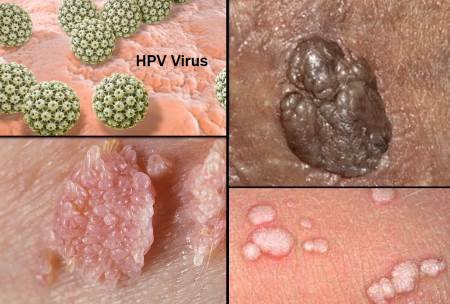
Symptoms of HPV Infection
Low-risk HPV infections:
- May cause visible warts on or around the genitals, anus, mouth, or throat
- In rare cases, can lead to a condition called respiratory papillomatosis, causing breathing problems due to warts in the larynx or respiratory tract
High-risk HPV infections:
- Often do not cause any noticeable symptoms in the early stages
- May lead to precancerous changes or cancer over time, which can cause symptoms such as lumps, bleeding, or pain, depending on the affected area
It’s crucial to understand that the absence of symptoms doesn’t mean you’re not infected with HPV. Regular check-ups and screenings are essential for early detection and prevention of HPV-related complications.
HPV-Related Cancers
HPV can cause six types of cancer:
- Anal Cancer: Over 90% of anal cancers are caused by HPV. Both new cases and deaths from anal cancer are on the rise.
- Cervical Cancer: Virtually all cervical cancers are caused by HPV. Regular screening through HPV tests or Pap smears can help prevent most cases by detecting and removing precancerous cells before they develop into cancer.
- Oropharyngeal Cancer (Throat Cancer): About 70% of oropharyngeal cancers are caused by HPV. This cancer forms in the tissues of the middle part of the throat, behind the mouth.
- Penile Cancer: HPV causes approximately 63% of penile cancers. This rare form of cancer usually develops on or under the foreskin.
- Vaginal Cancer: About 75% of vaginal cancers are caused by HPV.
- Vulvar Cancer: HPV is responsible for roughly 69% of vulvar cancers.
The Impact of HPV-Related Cancers
In the United States alone, there are over 47,100 new cases of cancer each year in parts of the body where HPV is often found. Of these, an estimated 37,300 are directly caused by HPV infection.
Globally, the impact is even more significant. HPV causes an estimated 630,000 cancers worldwide each year, accounting for about 5% of all cancers. Cervical cancer, in particular, is the fourth most common cancer among women globally and caused an estimated 342,000 deaths in 2020.
Preventing HPV Infection: The HPV Vaccine
One of the most effective ways to prevent HPV infection and its related cancers is through vaccination. The current HPV vaccine, Gardasil 9, protects against nine HPV types, including seven high-risk types that cause most HPV-related cancers and two low-risk types that cause most genital warts.
Key facts about the HPV vaccine:
- Efficacy: The HPV vaccine is estimated to prevent up to 90% of cancers caused by HPV infection and genital warts.
- Recommendation: The Centers for Disease Control and Prevention (CDC) recommends HPV vaccination to prevent new HPV infections and HPV-associated cancers and other diseases.
- Optimal age for vaccination: The vaccine offers the most protection when given to girls and boys at ages 9-12.
- Vaccination schedule: Those who start the vaccine series before age 15 should receive two doses, while those who receive their first dose at age 15 or older should receive three doses.
- Catch-up vaccination: For young people who weren’t vaccinated within the recommended age range, HPV vaccination is recommended up to age 26.
- Vaccination for older adults: While the vaccine is FDA-approved for use through age 45, it’s not routinely recommended for most people ages 27 to 45. However, if you’re concerned about your risk for new HPV infection, discuss the possibility of vaccination with your healthcare provider.
The importance of the HPV vaccine cannot be overstated. It’s a safe and effective way to prevent a common infection that can lead to several types of cancer. When discussing the vaccine with parents or patients, healthcare providers often emphasize its cancer-prevention benefits, as this has been found to be the most compelling reason for many people to get vaccinated.
Screening for HPV Related Cancers
While vaccination is crucial for prevention, screening plays a vital role in detecting HPV-related cell changes early, when they’re most treatable. Currently, cervical cancer is the only HPV-caused cancer for which FDA-approved screening tests are available.
Cervical Cancer Screening:
- Cervical cancer screening is an essential part of routine healthcare for women.
- Screening tests include the HPV test (which checks for high-risk HPV), the Pap smear (which checks for cervical cell changes), and the HPV/Pap cotest (which checks for both).
- The frequency of screening depends on age and previous results. Consult with your healthcare provider for personalized recommendations.
Screening for Other HPV Related Cancers:
- Anal Cancer: While there are no standard screening tests for the general public, individuals at higher risk (such as men who have sex with men, women with a history of cervical or vulvar cancer, people living with HIV, and organ transplant recipients) may benefit from anal Pap tests.
- Oropharyngeal Cancer: There are currently no standard screening tests for throat cancer.
- Penile, Vaginal, and Vulvar Cancers: No standard screening tests exist for these cancers. However, regular check-ups and promptly reporting any unusual symptoms to your healthcare provider are important.
It’s crucial to remember that early detection through screening can significantly improve treatment outcomes for HPV-related cancers.
HPV and Precancerous Changes
When HPV infection persists, it can lead to changes in the affected cells, a condition known as dysplasia. Dysplasia is not cancer, but it can progress to cancer if left untreated.
Dysplasia is categorized into three grades:
- Mild (low-grade) dysplasia: Often clears on its own as the body fights off the HPV infection.
- Moderate dysplasia: May require treatment to prevent progression to cancer.
- High-grade dysplasia: Considered precancerous and typically requires treatment.
Treatment of Dysplasia:
The approach to treating dysplasia depends on its location and severity:
- Cervical Dysplasia: Moderate to high-grade cervical dysplasia (also called cervical intraepithelial neoplasia or CIN) is usually treated with procedures like loop electrosurgical excision procedure (LEEP) or cold knife conization.
- Anal, Penile, Vaginal, and Vulvar Dysplasia: These may be treated with surgery (such as wide local excision) or topical treatments, depending on the specific case.
Your healthcare provider will discuss the best treatment options based on your individual situation.
How HPV Leads to Cancer
Understanding how HPV can lead to cancer is crucial for appreciating the importance of prevention and early detection:
- Infection: High-risk HPV infects cells in the affected area.
- Cell Changes: The virus interferes with normal cell functions, causing infected cells to multiply uncontrollably.
- Immune Response: In most cases, the immune system recognizes and eliminates these abnormal cells.
- Persistent Infection: Sometimes, the infection persists, and the abnormal cells continue to grow.
- Precancer Development: Over time, an area of precancerous cells may form.
- Cancer: If left untreated, these precancerous cells can eventually develop into cancer.
This process typically takes many years. Research suggests it can take 5 to 10 years for HPV-infected cervical cells to develop into precancers and about 20 years to develop into cancer.
Factors that increase the risk of persistent HPV infection and cancer development include:
- Infection with a particularly aggressive HPV type (especially HPV 16 or 18)
- Smoking
- Having a weakened immune system
- Being infected with HIV
- Taking immunosuppressive medications
Protecting Yourself from HPV
Given the prevalence and potential consequences of HPV infection, taking steps to protect yourself is crucial:
- Get Vaccinated: If you’re eligible, get the HPV vaccine. It’s most effective when given before potential exposure to the virus.
- Practice Safe Sex: While not 100% effective against HPV, using condoms correctly and consistently can reduce the risk of transmission.
- Get Regular Check-ups: Stay up-to-date with recommended screenings and discuss any concerns with your healthcare provider.
- Quit Smoking: Smoking can increase the risk of HPV persistence and progression to cancer. If you smoke, consider quitting. Resources are available to help, including the national quitline at 1-800-QUIT-NOW (800-784-8669).
- Maintain a Healthy Immune System: A strong immune system can help your body clear HPV infections more effectively. Eat a balanced diet, exercise regularly, get enough sleep, and manage stress.
- Be Aware of Your Body: Know what’s normal for you and report any unusual symptoms or changes to your healthcare provider promptly.
Conclusion
HPV is a common virus that can have serious health consequences, including several types of cancer. However, with vaccination, regular screening, and healthy lifestyle choices, many HPV-related health issues can be prevented or detected early when they’re most treatable.
Remember, knowledge is power when it comes to your health. Stay informed, talk openly with your healthcare provider, and take proactive steps to protect yourself and your loved ones from HPV and its potential complications.
By understanding HPV and taking appropriate preventive measures, we can work together to reduce the impact of this virus and the cancers it causes, promoting better health for individuals and communities worldwide.



